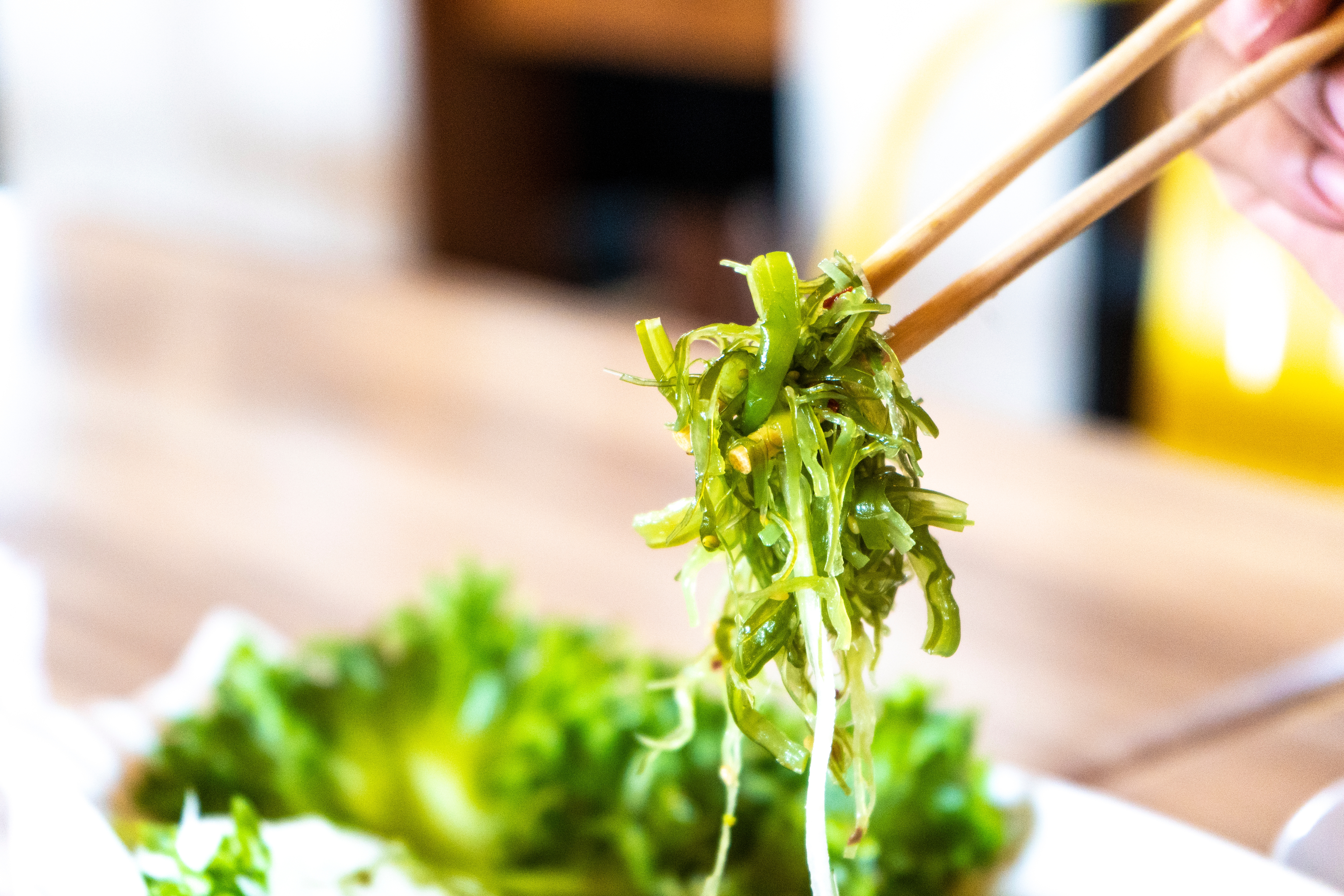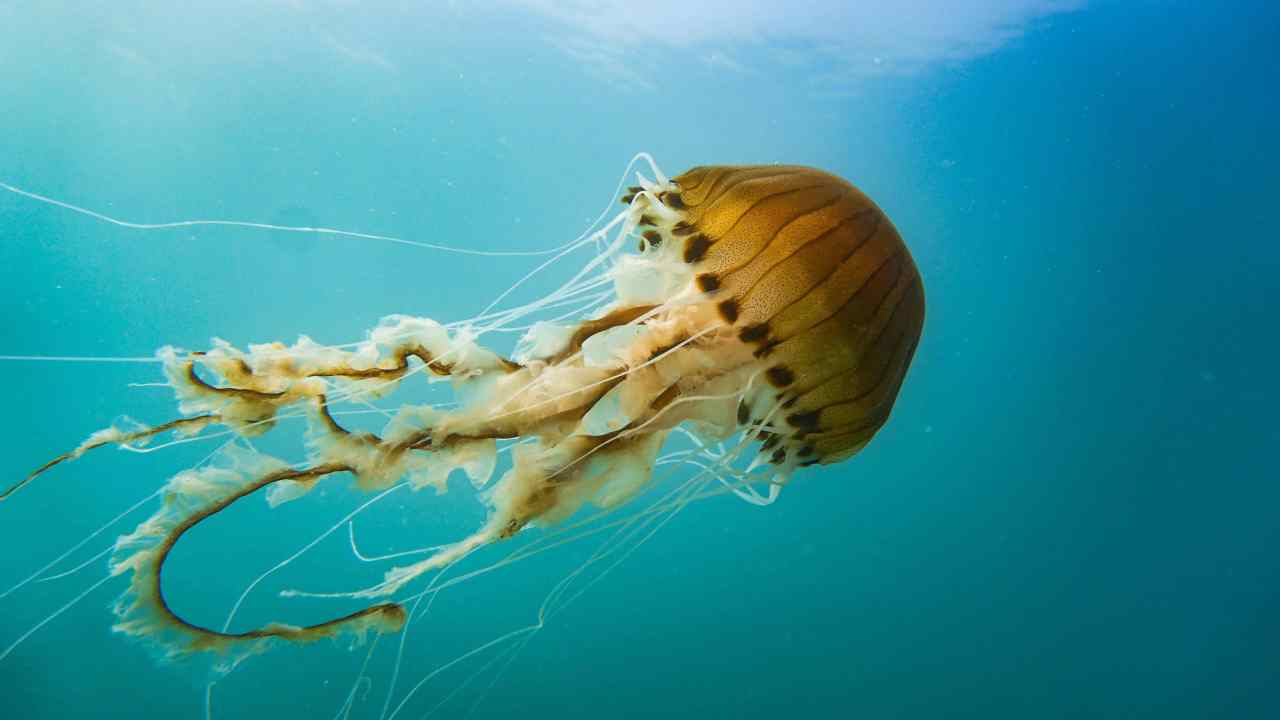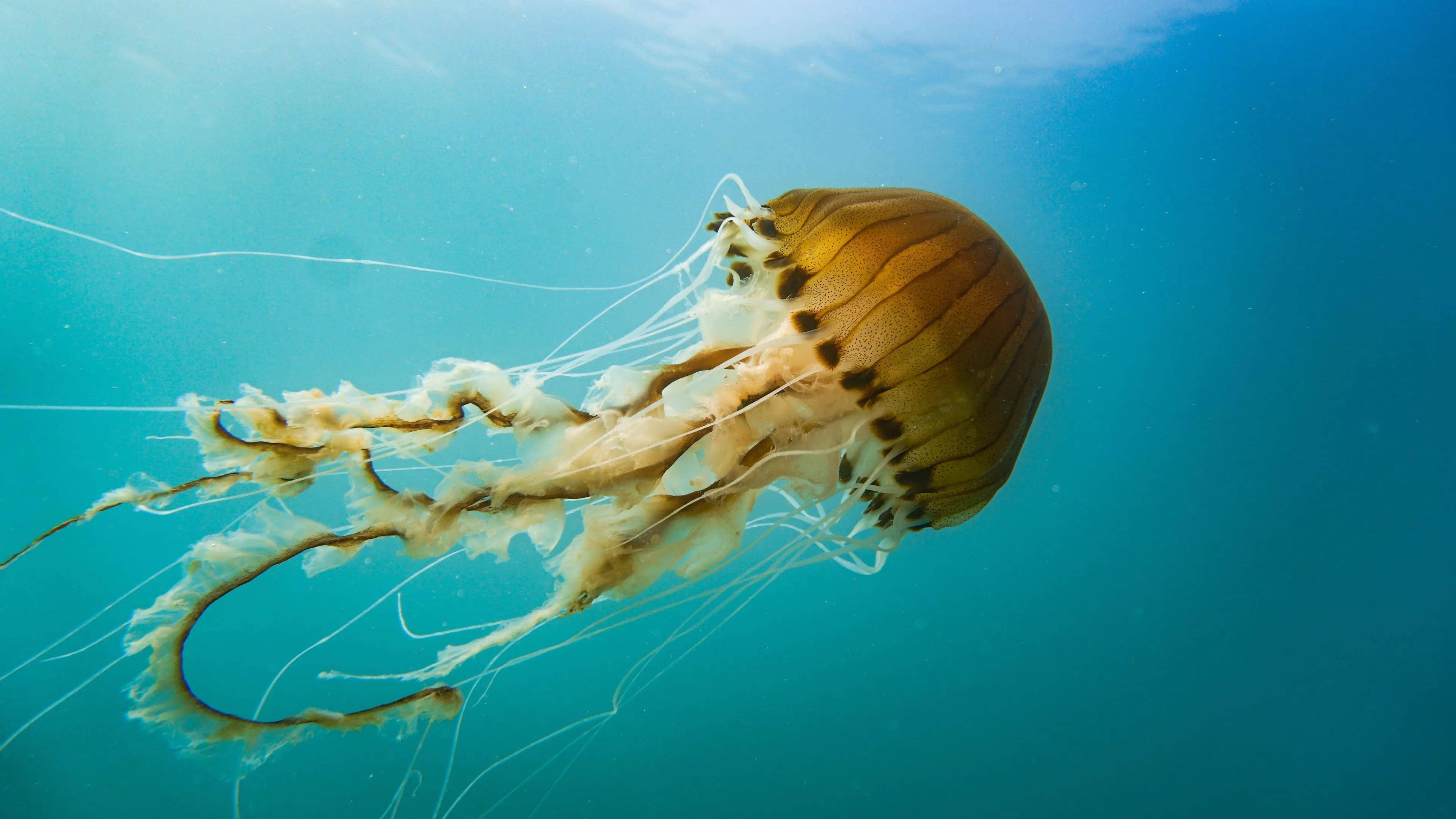Dipping my toes in the Irish Sea on a family holiday last week, I encountered something slimy, muddy-brown and decidedly squelchy. I managed to flick it off my foot with minimal squealing and thought no more of it. But, looking back, perhaps I missed a lucrative opportunity – or a tasty treat for the kids’ dinner.
For my beach find was in fact Irish moss, also known as ‘sea moss’ or ‘carrageen moss’ – the latest cult ingredient among experimental foodies, health-conscious celebrities and social media aficionados. Devotees claim the delicacy – reddish algae which grows abundantly on rocks off the coast of Britain, Ireland and North America – is not only the newest superfood but the best thing since the turmeric latte, bringing benefits for the gut, brain and heart.
Social media has gone wild over sea moss, which is sold dried, in gel form or as capsules, and has found its way on to the shelves of retailers as diverse as Selfridges (in a chocolate shake at its new Feel Good Bar) and Tesco (as a £1.20 vanilla-flavoured, canned drink).
While raw sea moss is said to have an earthy, salty flavour, similar to clams and oysters, with a texture like lettuce, the gel form – the most popular product – has little or no taste, with a gloopy, jelly-like consistency which makes it an ideal thickener for smoothies, sauces and soups.
Hungry yet? It’s certainly not for everyone, but fans simply can’t get enough: there are almost 30 million #seamoss videos on TikTok, and celebrity enthusiasts include Kim Kardashian, Hailey Bieber and Kaia Gerber (who swears by a spoonful of the gel every morning).

Jellyfish crisps are crunchy, slightly salty, eerily translucent and taste ‘a bit like pork scratchings’
If munching on sea moss for breakfast doesn’t float your boat, fear not: eating the sea – or at least creatures and plants from the ocean depths – is very en vogue, so there’s something to cater for every taste. Enter the newest marine-themed snack: jellyfish crisps. Yes, you read that right: crispy, salty nibbles made not from potatoes but from slivers of jellyfish flesh.
The unconventional concept has been pioneered by scientists at the University of Southern Denmark, who have transformed jellyfish into crisps by soaking them in pure alcohol, drying them out and then dousing them in salt and vinegar. Described by researcher Dr Mathias Clausen as tasting ‘a bit like pork scratchings’, the high-energy, zero-calorie snacks have also been endorsed by supermarket chain Sainsbury’s, which in a recent future foods report declared jellyfish crisps to be rich in vitamins and nutrients.
Already a delicacy in some Asian cuisines, jellyfish are high in protein, magnesium, iron and vitamin B12 (beneficial to the brain and nerve cells), according to the experts. Even the poisonous varieties can be made palatable – and, crucially, non-toxic – by marinating them in minerals for several weeks. If you dare brave a bite, they’re said to be crunchy, slightly salty (even before the artificial flavours are added) and eerily translucent to the eye. They’re heading for a supermarket near you within the next few years – and you’ll find them next to the seaweed snacks.
While seaweed might have been on mainstream menus for a while, even this is undergoing something of a moment in the spotlight. From Itsu’s crispy seaweed thins to Saxa’s smoked seaweed salt, and a rather delicious sounding range of seaweed pestos and tapenades by Scottish company Shore, restaurants and home cooks are taking seaweed dishes to ever-more imaginative levels. At Covent Garden’s Bancone, there’s brown shrimp and seaweed butter pasta, while at Roka in Mayfair diners have declared the seaweed and watercress salad ‘to die for’. Next month sees Seagriculture 2022, the world’s first international seaweed conference in North America, where experts will gather to share their knowledge – and tuck into a menu majoring on kelp.

So why is seafood (and I’m not talking lobsters and scallops) so popular right now? Social media has certainly created a buzz around these unorthodox ingredients, but devotees say the health benefits speak for themselves.
Sea moss, for example, is rich in phytochemicals, which help improve our immune response – something not to be taken for granted in recent years – and also provides plenty of dietary fibre, which feeds microbes in the gut. Similarly to seaweed, it’s one of the best plant sources of omega-3 fatty acids, which not only keep our heart and cardiovascular systems healthy, but have been shown in studies to improve cholesterol balance and thin the blood, reducing the risk of heart disease. TikTokers reckon sea moss clears your skin and prevents bloating, too.
As for jellyfish, they’re high in choline, a calcium-building protein which is essential for synthesising DNA, supporting the nervous system and producing fat for cell membranes. So far, so convincing.
All three are also highly sustainable: they require no fresh water, land or fertiliser to produce, and are found in abundance in our oceans – a real boon at a time when consumers are seeking carbon-neutral foods.
And though they might not be on your shopping list quite yet, there’s nothing new about munching on snacks from the seabed. Seaweed and jellyfish were used in Chinese medicine as far back as 600 BC, while sea moss was an important source of nutrition during the Irish famine in the mid-19th century, reappearing during the second world war when other ingredients were in short supply.
Despite the apparent benefits, there are also potential risks. Consuming too much sea moss, for example, can cause iodine toxicity, leading to hyperthyroidism. And pesticides, toxic metals and petroleum can all find their way into the organisms if they’re not produced and harvested in a certified way – so be wary of collecting them yourself.
With all this in mind, are you tempted to sip on a sea moss smoothie or tuck into a bowl of jellyfish crisps? As summertime snacks go, they’re certainly seasonal, not to mention good for the planet and for our health. Still, I remain unconvinced. Damp, slimy, wibbly-wobbly things belong at the bottom of the ocean, not on my plate. Now, if you’ll excuse me, I’m feeling bit, well, seasick…







Comments